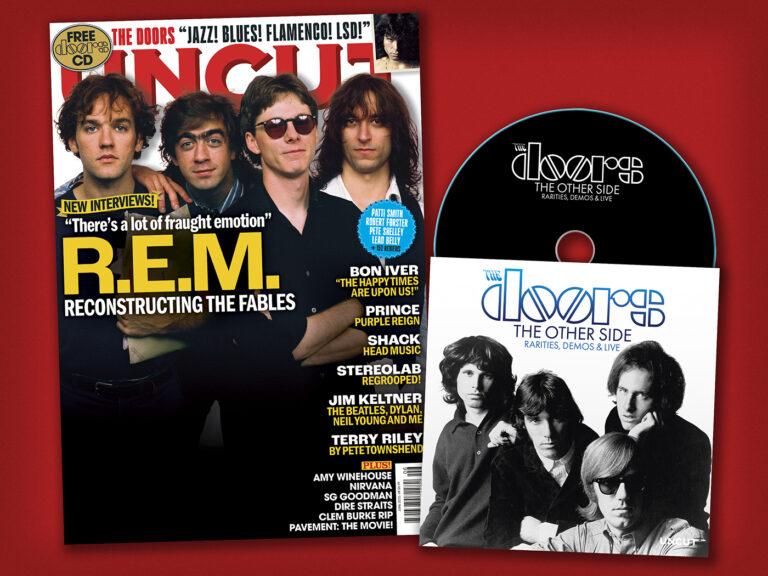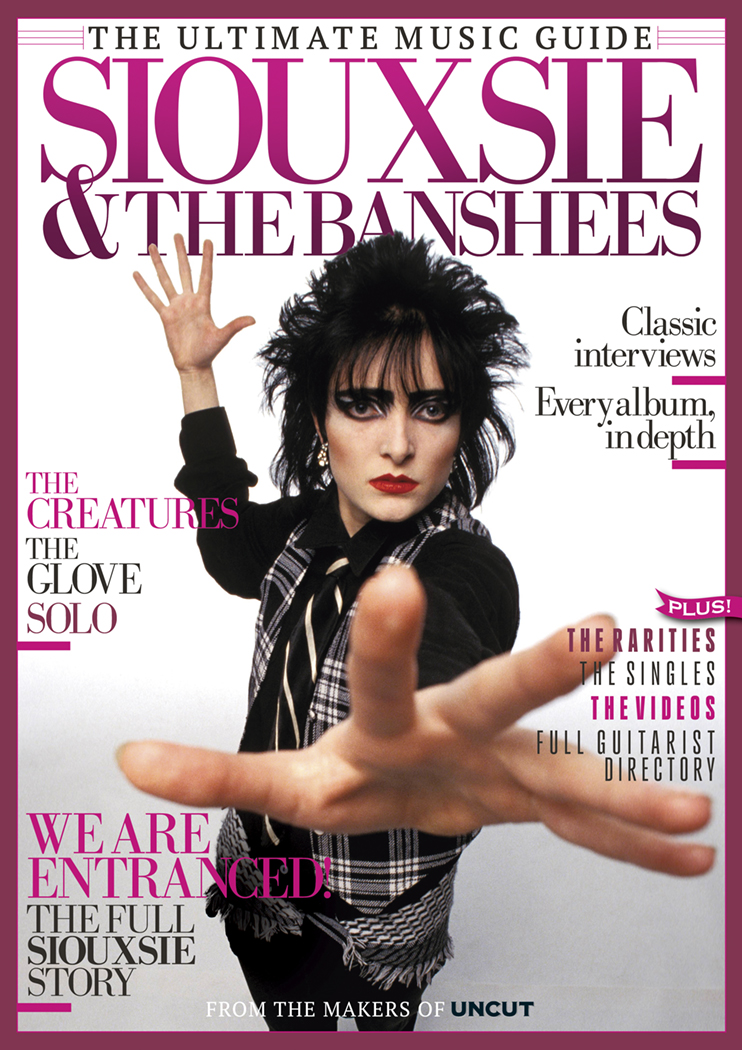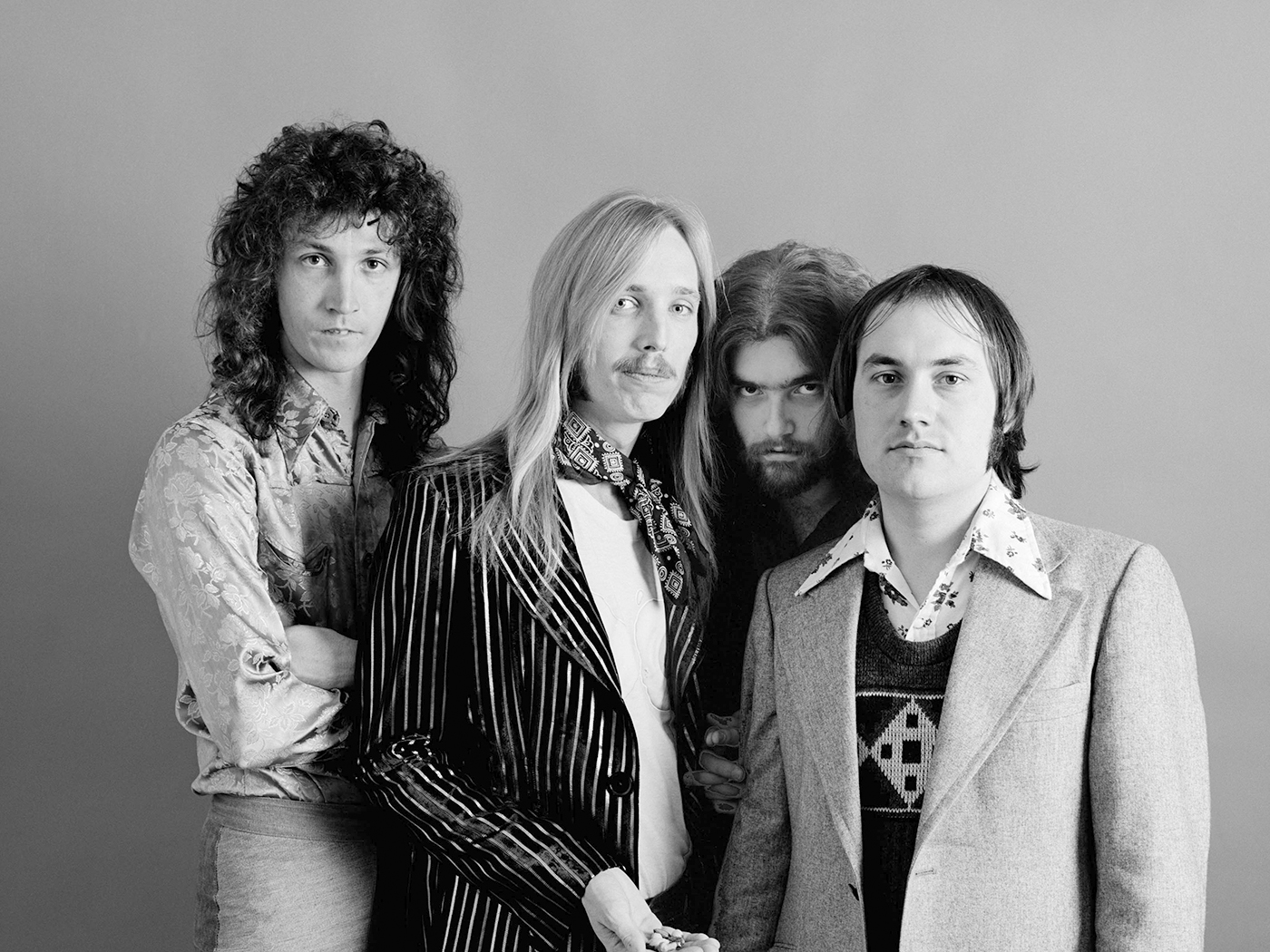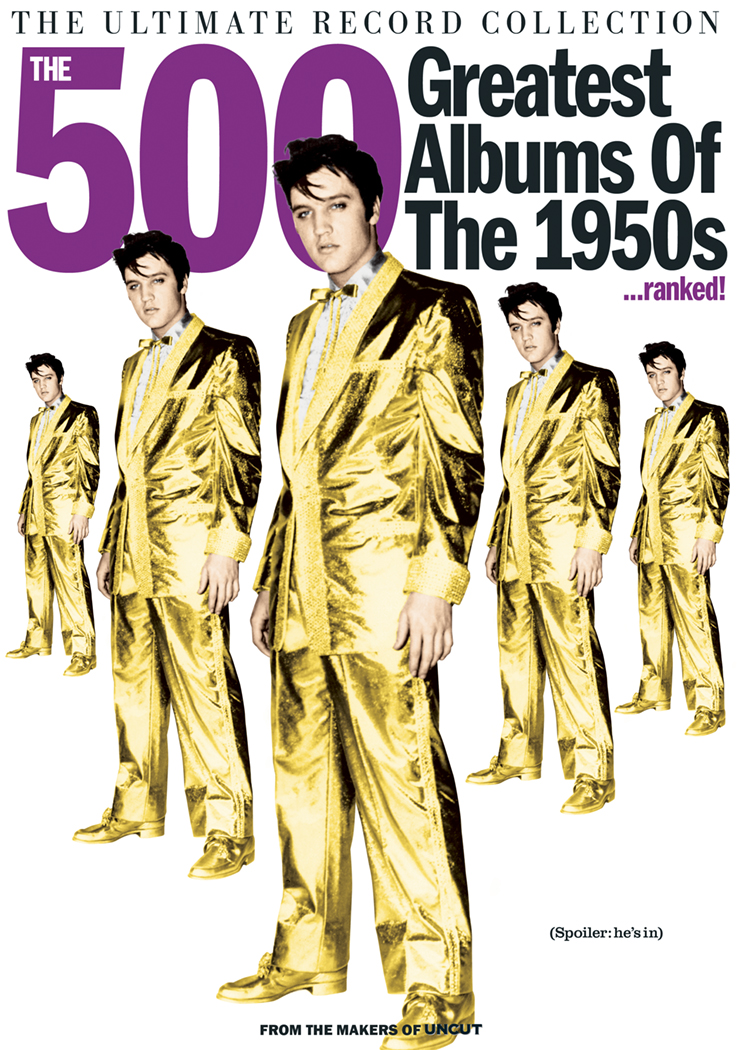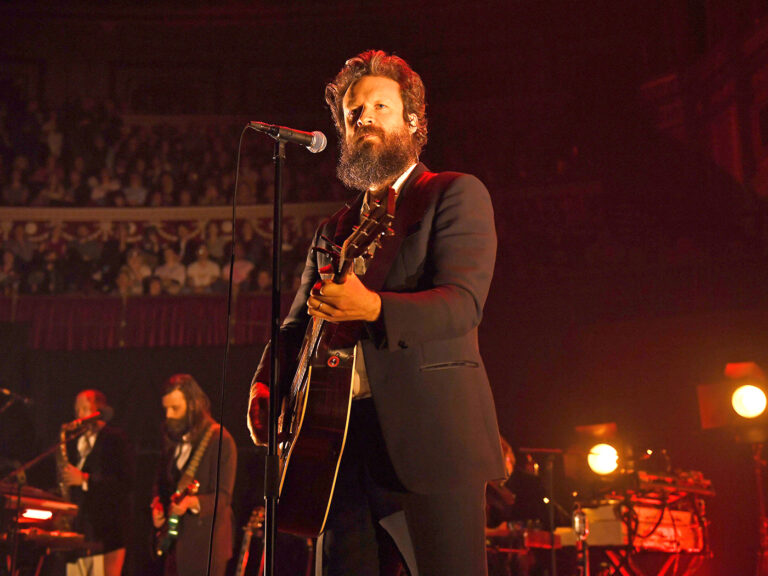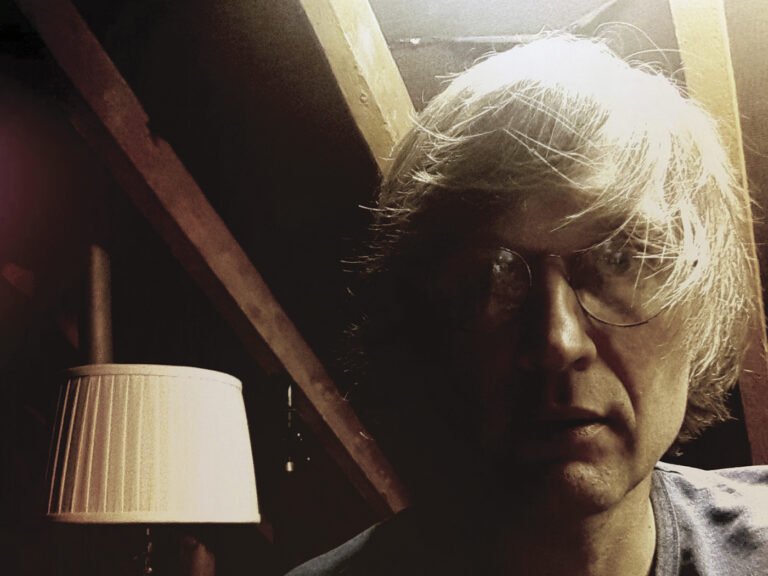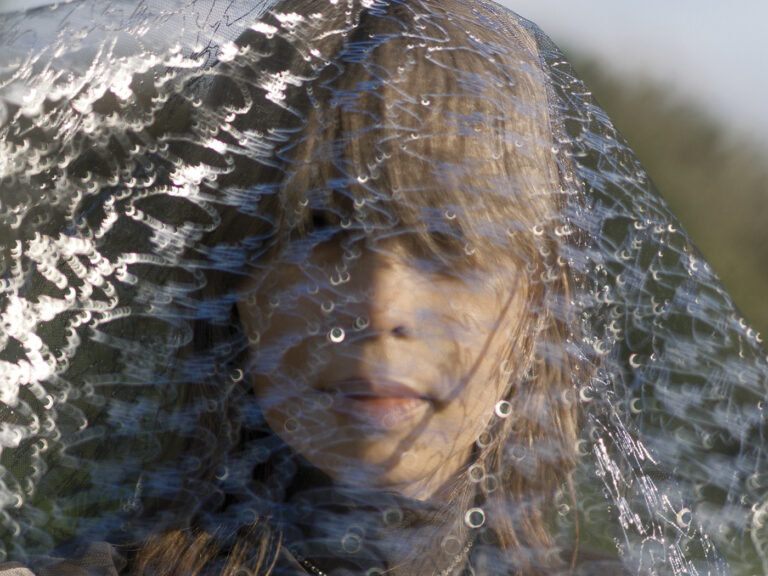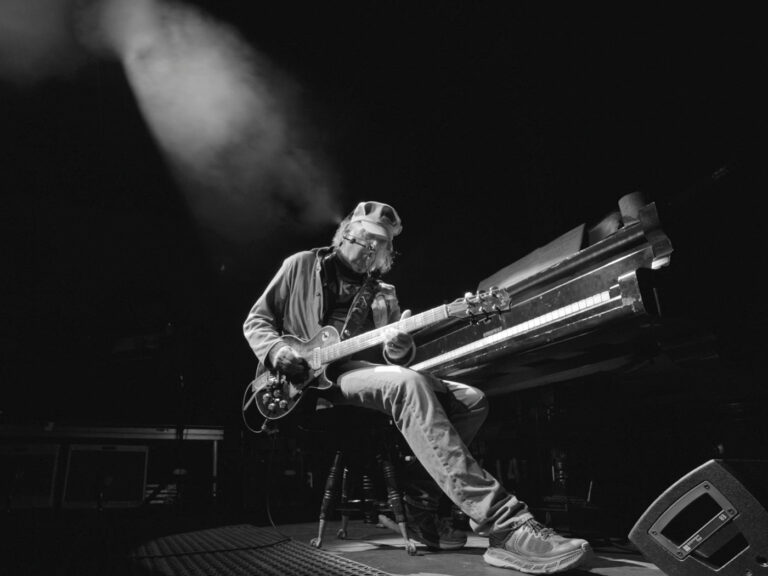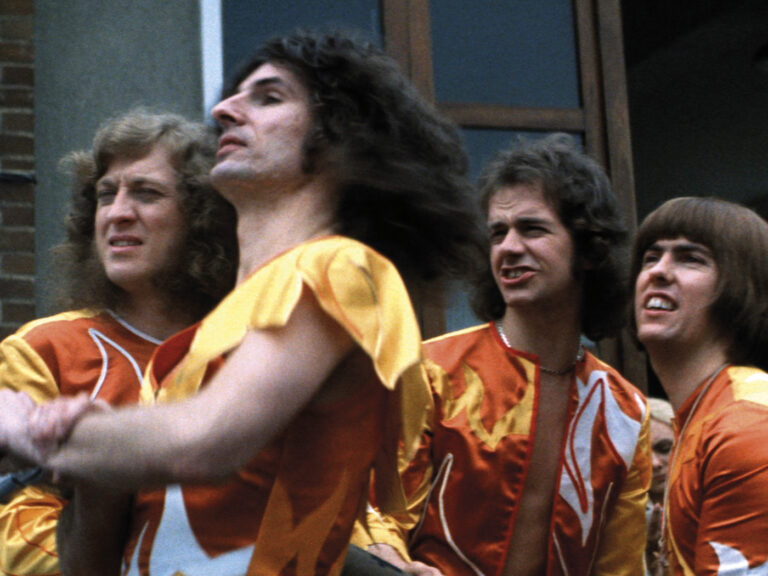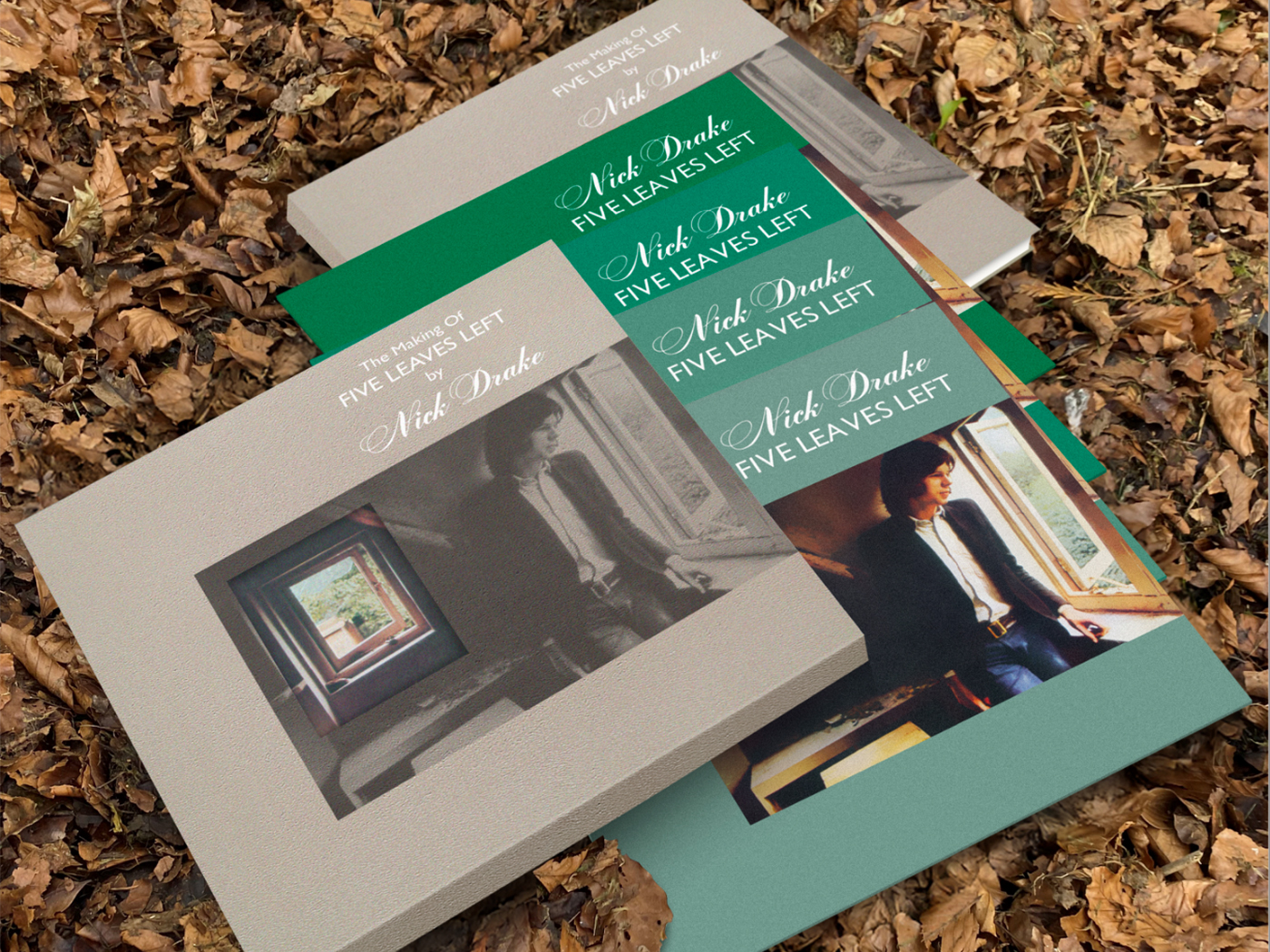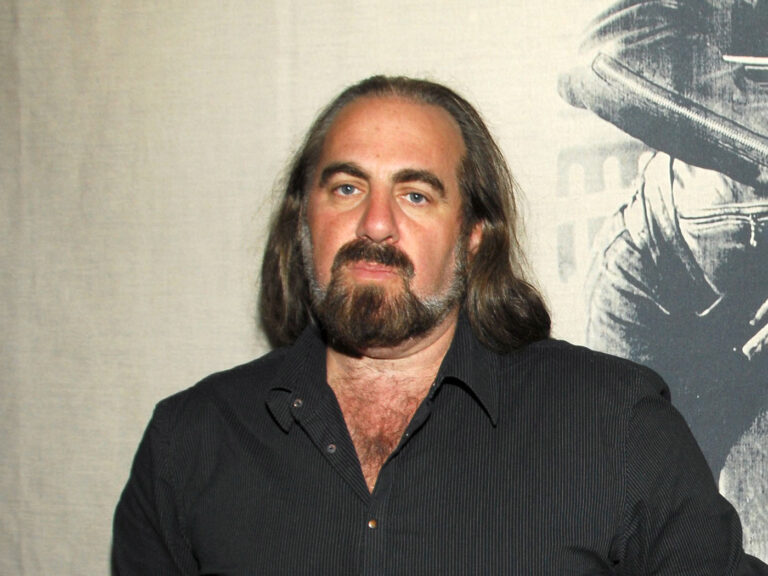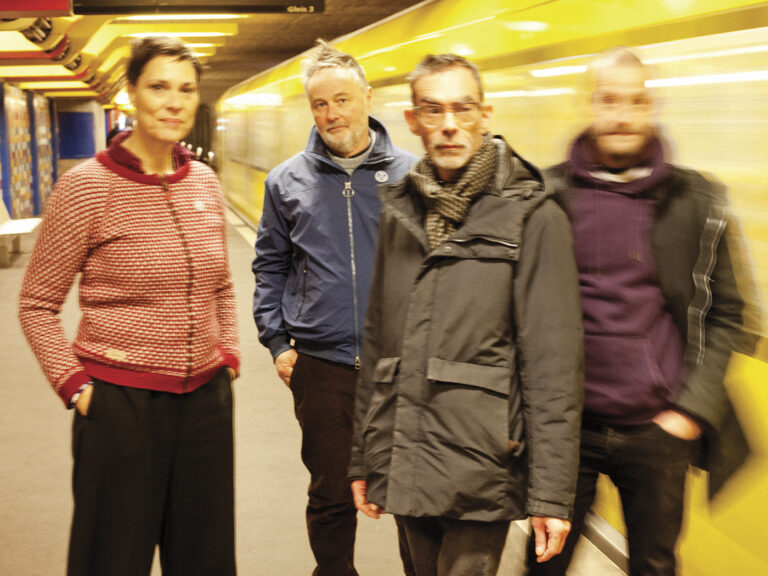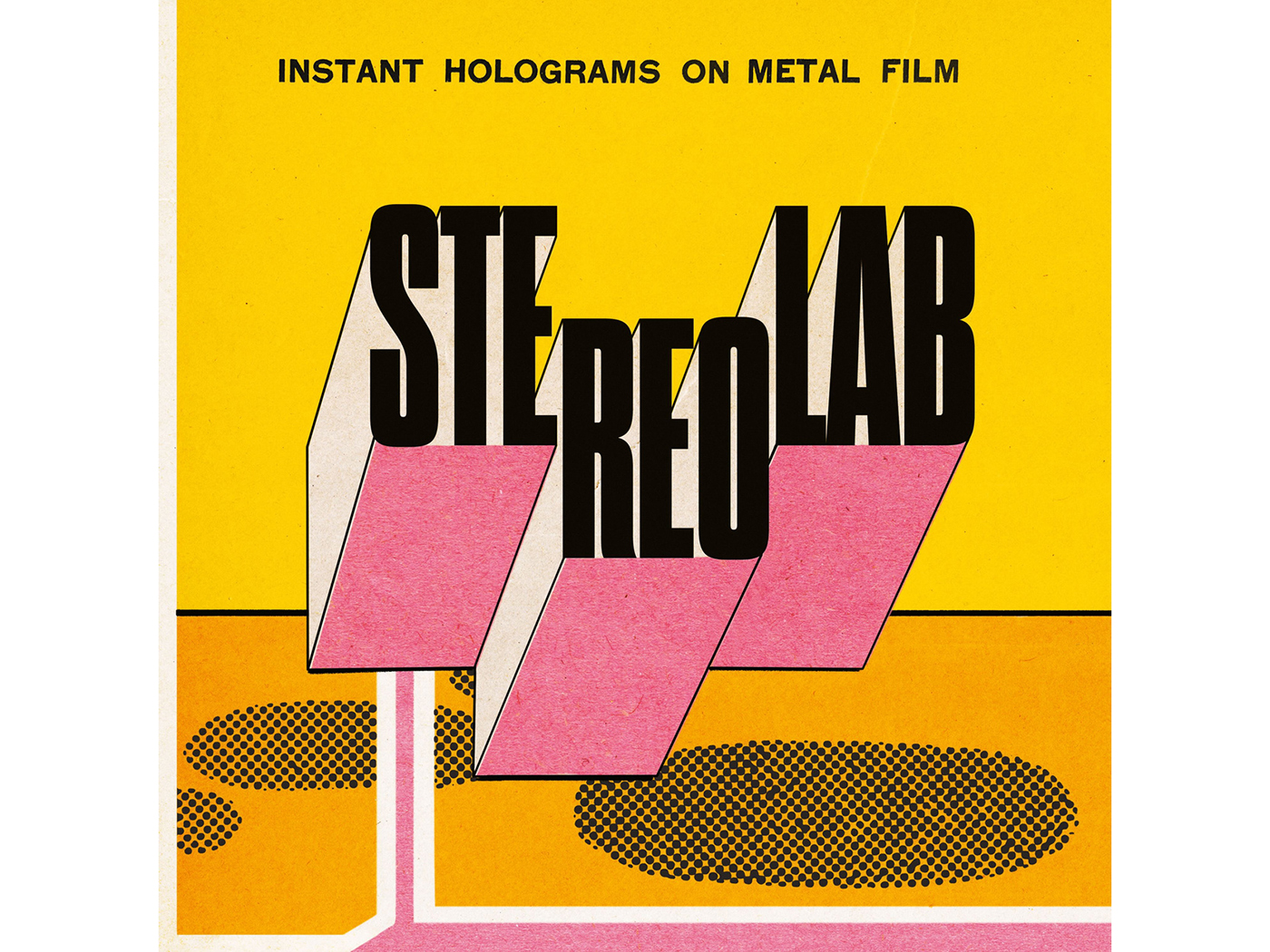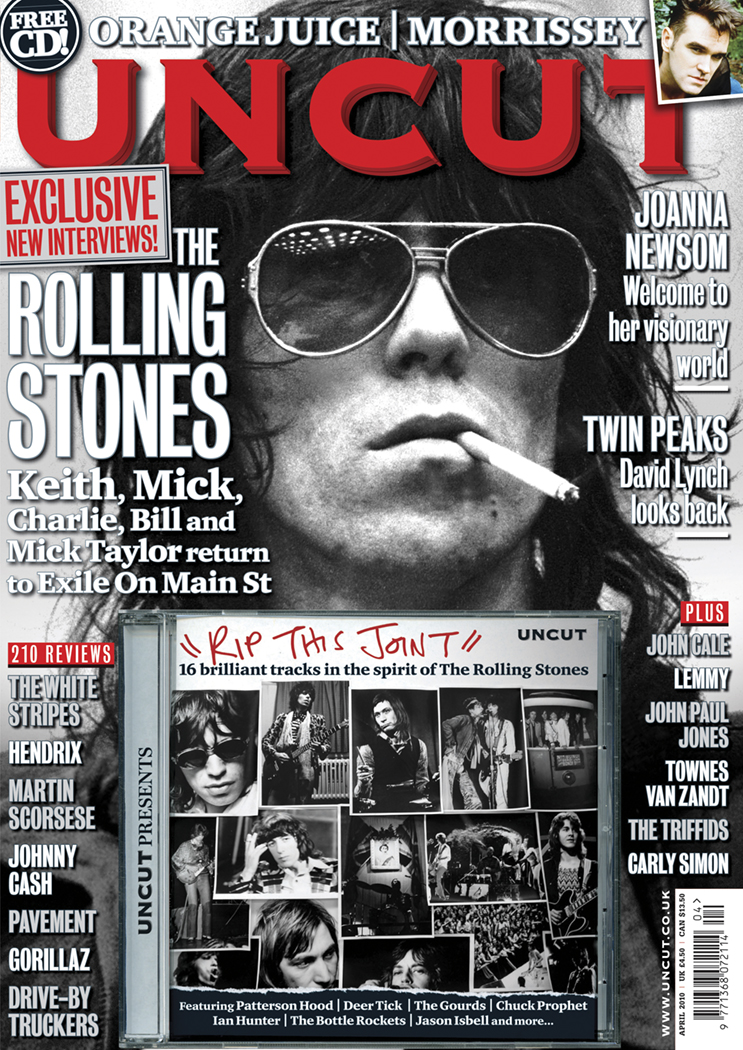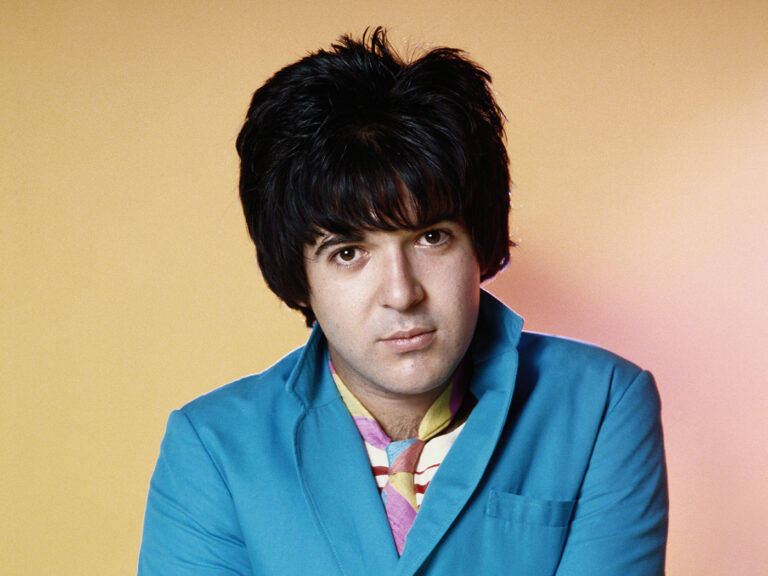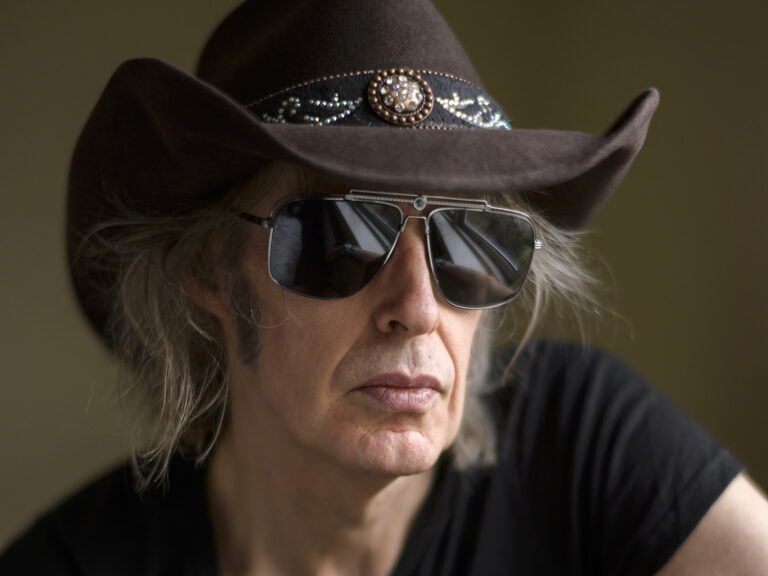The concept album has a chequered history in rock’n’roll. As a musician of a certain vintage – inspired by punk, rooted in rock classicism – Mike Scott flinched when collaborator Simon Dine suggested to him that an album about Dennis Hopper should include an instrumental for each of the actor’s five wives. The memory of Rick Wakeman’s Six Wives Of Henry VIII flashed up, and it was not an inspiring thought. And yet. And yet.
THE MAY 2025 ISSUE OF UNCUT IS AVAILABLE TO ORDER NOW: STARRING SMALL FACES, A SMALL FACES RARITIES CD, RADIOHEAD, LOU REED, BOOTSY COLLINS, POGUES, THESE NEW PURITANS, SUZANNE VEGA AND MORE
There’s no getting away from it. Life, Death & Dennis Hopper is a concept album. It is all about Dennis Hopper. It is inspired by Dennis Hopper. It explores the life and times of Dennis Hopper. It includes – look away now, prog fans – instrumental interludes for each of Dennis Hopper’s five wives. Yet it is, like all Waterboys records, a deeply personal thing. It is completely different from everything that Scott has ever done, yet entirely in keeping with it. It could be a page from his Jungleland fanzine. It could be a rock opera or a West End musical, formed from an abstract thought at the far reaches of the singer’s imagination. It is, in a way that suits the essence of its subject, as charming as it is unhinged.
The idea began with the song “Dennis Hopper” on the 2020 album, Good Luck, Seeker. That Hopper was an exercise in rhyme, verging on novelty, about “a dude with a ’tache on a chariot chopper” (rhymes with showstopper, pill-popper, Steve Cropper). There were thoughts of releasing the song as a single, which prompted Scott and fellow Waterboy Brother Paul (Brown) to work on two further Hopper mash-ups. Then three of the Waterboys – James Hallawell, Aongas Ralston and Ralph Salmins – got together without Scott’s knowledge to record. “And I got an email with a zip folder,” Scott tells Uncut, “and it had these seven instrumentals in it, and a little note saying ‘Can you put lyrics on these?’” Inspired by the prospect of writing words for unfamiliar music, Scott found himself captivated by a quote he had read in a book of Hopper interviews, where the actor reflected on his survival after years of addiction and craziness. “And there’s this very moving line,” Scott recalls. “He said, ‘I don’t know how I made it.’ So much in those seven or eight words.”
The line fitted precisely with one of the instrumentals, and quickly turned into a song, signifying Hopper’s return from the abyss. The other tunes suggested “a sort of 1969 vibe”, prompting a lightbulb moment where the whole project came into view. “From that moment, the songs came, bang, bang, bang! Like when I was a teenager, I used to throw out a song every day, except those weren’t very good. These were better.”
Dennis Hopper said many quotable things, but one of the things he said was a warning to biographers. “My whole written history is one big lie! I can’t even believe my history.” And that is roughly where Scott’s Hopper lands, fluctuating between the method and the madness. The album does cover the waterfront of Hopper’s career (with further chapters to come on a Record Store Day release). But it also uses Hopper as a shorthand for a time and place. Hopper is the counterculture (pick any song). Hopper is a witness to pop art (the sweet “A Guy Like You [Andy]”). Hopper is a cultural tourist (“The Tourist”). Hopper is psycho Frank in Blue Velvet (the self-explanatory “Frank [Let’s Fuck]”). Hopper plays golf with Willie Nelson (“Golf, They Say”, which manages to sound like Mott The Hoople in a Pringle V-neck).
All of the Hoppers are present, and each of them is more or less accurate, while also being a distortion. Scott is friends with Hopper’s hopped-up biographer Tom Folsom, and incorporates his idea that the actor is omnipresent: here, there and everywhere, a stoned Zelig, Dennis the Menace.
Lockdown played a role in the genesis of the album, and it also reflected a change in the working practices of Scott. Where once the band might have spent months chasing the spontaneous creativity of Fisherman’s Blues, technology now allows for home recording, while also making it easier to collaborate remotely. Presumably that helped Scott compile the album’s impressive supporting cast, from Steve Earle, Bruce Springsteen, Fiona Apple and Dawes’ Taylor Goldsmith. There are walk-ons for Kathy Valentine of the Go-Go’s and Patty Paladin of Snatch.
It’s Earle’s voice that opens the album, with the elegiac scene-setter “Kansas”, on which Hopper the narrator expresses his need to get out, to go, to “blow, Kansas”. Hopper characterised himself as “a middle-class farm boy from Dodge City”. The song has him heading out towards the tall mountains or skyscrapers of somewhere – anywhere – else. The tune encapsulates the collaborative nature of the album. Scott discarded his own, poppier effort, tasking Earle to compose something closer to a midwestern lament. When Earle filed his demo, the singing was, as Scott says, “just exquisite”, so it stayed.
A similar thing happened with Fiona Apple. Scott was encouraged to approach her after she delivered a smouldering cover of “The Whole Of The Moon” for the finale of the TV drama The Affair. Plans to supply Apple with an instrumental to sing over were short-circuited when she brought the song to life on the piano. Her performance of “Letter From An Unknown Girlfriend” is a highlight. The song imagines what it might have been like to be on the other side of Hopper’s dark charisma, and plays out like one of those country soul ballads by The Delines, with Apple inhabiting the extremes.
Musically, it’s a collage. There are flashes of heavenly elevator music (those five wives), spoof newsreels and film trailers (“Freaks On Wheels”… “they party like freaks”), danceable loops (“Hopper’s on Top [Genius]”). There are Californian harmonies, nightmarish flickers, mumbled voices, ticking clocks, thunder, fire, wind. Springsteen adds a voiceover to “Ten Years Gone”, which swells majestically and explodes, while also being a great groove. And Scott is at his most engaging on the gorgeous “Blues For Terry Southern”, which rolls like marshmallow clouds on a western sky in the aftermath of a tornado.
What’s it all about? Well, the album celebrates Hopper’s charisma, his beauty, his open-minded artistry, his rebel spirit. There’s a downside – the self-destructive tendencies, the way these things are warped by fame, the aftermath and the emptiness. Scott balks at the suggestion that his approach might be nostalgic, but his version of Hopper is a montage of myths about a time when, as he says, “people were looking at new ways of being human.”
Conceptually, it’s closer to Songs For Drella or Sufjan Stevens’ Illinoise than it is to Rick Wakeman. Hopper is a device, an operatic metaphor concerning pop culture’s golden age, where artists had the freedom to explore themselves and make mistakes. It’s a big wheel with a couple of broken spokes.
In the end, it comes down to little moments of bliss, and those seven or eight words. “I don’t know how I made it,” Scott sings, as Taylor Goldsmith essays an angelic harmony, “but I made it.” As a funeral march, it’s a humdinger.



